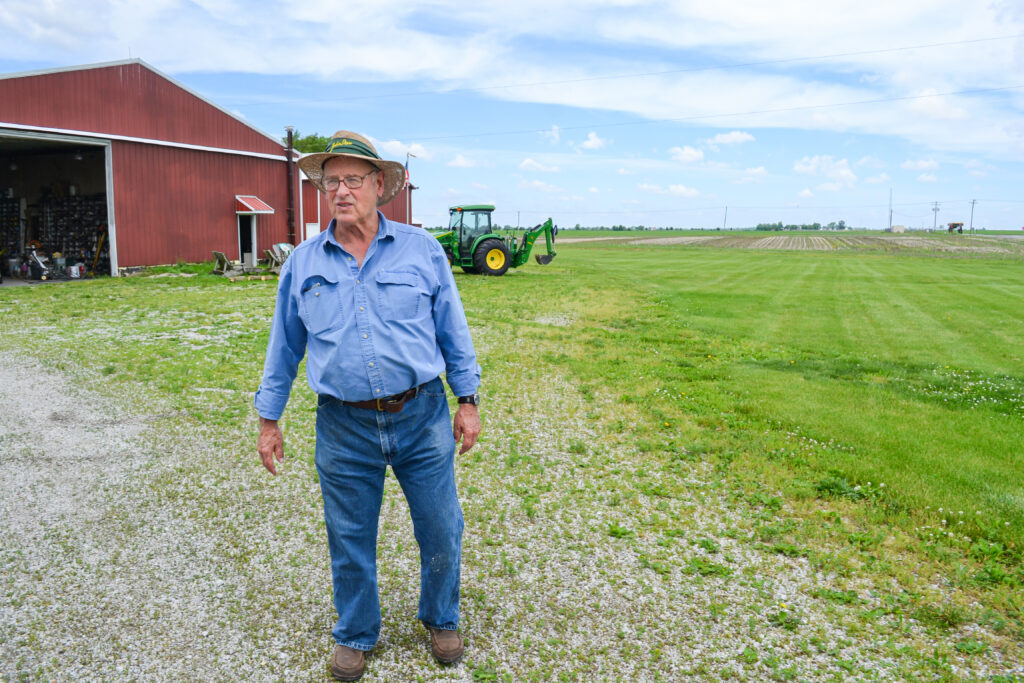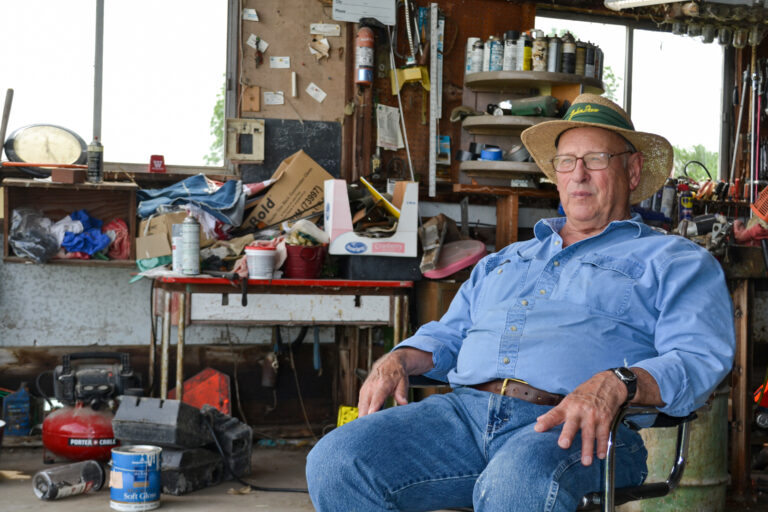TOLONO — Lin Warfel puts farmland owners in central Illinois into two categories: Those with a deep connection and desire to preserve their land, and those obsessed with short-term money.
The 80-year-old still owns the land that’s been in his family since his great-grandfather arrived in Champaign County in the 1800’s. After farming it for decades, he now rents the corn and soybean operation to his neighbors down the road.
It’s a crop-share arrangement. Warfel provides the land and pays the taxes. His tenants provide the machinery and labor and they split any profit down the middle.
Warfel’s house sits in the middle of the farm operation, so he’s able to keep a close eye on things. He says he likes how his tenants look after the land he treasures so much.
“These two young fellows are doing a great job and I admire them,” he says.
Not all farm landlords stay quite so involved. In fact, some don’t even live near the land they own. Warfel says you can spot an absentee landlord simply by looking at their land — which often lacks proper drainage and is therefore prone to increased runoff.
“One of those very large landowners, if you go past his fields, they’re characterized by ponds. And there’s nothing in those ponds except mosquitoes. There’s no fish, no nothing. It’s just drowned out crops,” Warfel says. “And boy, that hurts because we want to take care of this soil.”

It’s a money thing
More than half of Illinois farmland is rented, according to data from the U.S. Department of Agriculture. That’s the highest rate in the country, but it follows a Midwestern trend.
“(The Midwest has) more outside investors interested in land,” says Gary Schnitkey, a professor of farm management at the University of Illinois. “Just the productivity and the amount of it makes it a good place to invest. It’s sort of ground zero for farmland investments in the U.S.”
Farmland rental leases come in two common forms — crop sharing, where the landlord and tenant split profits, and cash rent, where the farmer pays the landlord a fixed payment. Landlords arguably play a smaller role when they simply rent the land for a flat fee. Schnitkey says, increasingly, more Illinois landlords are moving to cash rent.
For many landowners, it’s all about making a profit. Bill Gates, for example, is America’s top farmland owner. And, oftentimes, that means conservation practices — which involve investing time and money — fall by the wayside.
Schnitkey says it comes down to the attitude of the landowner.
“If they’re concerned about the long-term viability of the farm, which many of them are, (conservation practices) can happen,” he says. “If, on the other hand, those landowners want the largest current return you can get, without much concern for the future, then you have more of an issue.”
Agricultural conservation practices — things like planting cover crops simply to hold the soil in place or planting without plowing, no-till — have become increasingly common. They preserve soil and cut the fertilizer and other chemical runoffs into streams. They also hold carbon in the ground, rather than releasing it into the atmosphere where it contributes to climate change.
But conservation practices mean more up-front costs. And while there are some government conservation incentive programs, most of them involve long-term commitments. The vast majority of farmland leases are year-to-year.
According to USDA 2017 Census of Agriculture data compiled and analyzed by Harvest Public Media, in general, Illinois counties with higher rates of rented farmland have fewer acres planted in cover crops. Counties with high rates of rented farmland also tend to have fewer no-till acres.
“The sense we get is that it’s more of a business decision,” says Soren Rundquist, director of spatial analysis for the Environmental Working Group. “(Landlords are) trying to make the most out of (their) investment in terms of renting land and planting (their) cash crop, versus incorporating a best-management practice.”
Rundquist uses aerial photography and satellite imagery to examine the adoption of conservation practices on Midwestern farms. He says anecdotal evidence suggests that conservation practices are less prevalent in areas with high rates of rented farmland.
“If the rent is high and there’s no carrots for you to adopt any above and beyond conservation, I think that’s what, at the end of the day, factors into the decisions made to work that land and make it the most profitable for the individual,” he says.
‘It’s the only system you got’
There’s no sign the farmland rental system will change any time soon.
“Most people I know would say it would be better if more of the land was owned by farmers that farmed it,” says Schnitkey, the Illinois farm management professor. “But there’s no way to make that happen.”
An 80-acre farm in central Illinois is worth about $1 million. Schnitkey says sky-high prices prevent many farmers from owning their own land.
“It’s the only system you got,” Schnitkey says, “What can you do?”
Warfel, the farm landlord, also doesn’t see changes on the horizon.
“The financial pressure is tilted towards… more and more farmland owned by non farmers who really just look at the bottom line of the cash income,” he says.
Educating his fellow farmers on the long-term value of conservation practices, he says, could help put pressure on absentee landlords. He hopes so.
“If you don’t protect the soil from wind and water erosion and if you till it constantly with huge machines, that has an impact and it’s having an impact,” Warfel says. “We are losing precious soil. That process is not sustainable.”
Follow Dana on Twitter: @DanaHCronin
9(MDM5MjE5NTg1MDE1Mjk1MTM5NjlkMzI1ZQ000))

